 |
King of Chemicals Manufacturers |
Specifications, Properties, Uses, SDS of Talc Dusting Powder and Purified Talc JP IP BP Ph Eur USP NF FCC Food Grade Manufacturer Supplier Exporter Wholesale & Small Packs, CAS Number 4807-96-6. |
|
| King of Chemicals has several associated companies having accreditations like cGMP, GLP - FDA Approved Good Manufacturing Practice and Good Laboratory Practice of WHO standard, ISO-9001, ISO-14001, ISO/IEC 17025, ISO ISO-45000, HACCP, FSSC 220000, FSSAI, "REACH" Registered, Kosher & Halal Certified. e-CTD and DMF support can be made available if needed. We offer USP NF BP Ph Eur EP IP JP Analytical Reagent FCC Food Grade Chemicals & Nutraceuticals. | |
        |
|
Muby Chem Pvt. Ltd. is a several decades old group of companies, engaged in manufacturing, supplying, distributing, wholesale supplies of Talc Dusting Powder and Purified Talc JP IP BP Ph Eur USP NF FCC Food Grade for actual users, including retail or small pack supplies for research and development work.
We supply fine and speciality chemicals, pharmaceutical excipients, mineral fortifiers in chemically pure, analytical reagent grade, IP BP USP Ph Eur EP JP and other pharmaceutical grade monograph including FCC Food grade chemicals and Nutraceuticals at best prices. We and/or our associated units have all the facilities to supply as per cGMP standard observing good manufacturing practice and good laboratory practice. We can assure low microbial count and also offer a test certificate for the same. We maintain warehouses across USA, India, and UAE. Our group exports to USA, Canada, Mexico, Argentina, Brazil, Chile, Korea, Malaysia, Thailand, Indonesia, Europe, and several other parts of the world. We supply in wholesale container loads to small pack of few grams. Solid products may be specified for it size and shape as desired by the buyer.


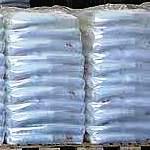
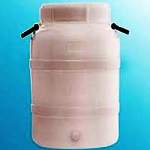
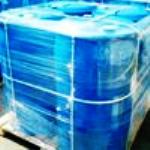
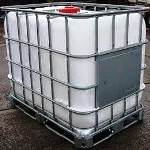
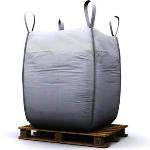
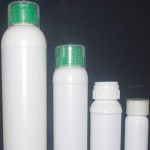
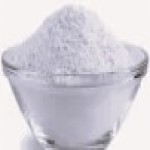
Talc Dusting Powder and Purified Talc CAS Number 4807-96-6
For Properties Specifications Uses of Talc Dusting Powder and Purified Talc Click Properties, Specifications, Uses, Price, Process of Talc Dusting Powder and Purified Talc Manufacturer.
For For SDS MSDS Sheet of Talc Dusting Powder and Purified Talc Click SDS Safety Data Sheet MSDS Sheet of Talc Dusting Powder and Purified Talc Manufacturer.
The Properties, Specifications, Monograph and Uses of Talc Dusting Powder and Purified Talc:
Talc USP NF Grade Specifications
Talc is a powdered, selected, natural, hydrated magnesium silicate. Pure talc has the formula Mg3Si4O10(OH)2. It may contain variable amounts of associated minerals among which chlorites (hydrated aluminum and magnesium silicates), magnesite (magnesium carbonate), calcite (calcium carbonate), and dolomite (calcium and magnesium carbonate) are predominant.
Identification:
A: The IR spectrum of a potassium bromide dispersion of it exhibits maxima at 3677 ± 2 cm –1, at 1018 ± 2 cm–1, and at 669 ± 2 cm–1.
B: Mix about 200 mg of anhydrous sodium carbonate with 2 g of anhydrous potassium carbonate, and melt in a platinum crucible. To the melt add 100 mg of the substance under test, and continue heating until fusion is complete. Cool, and transfer the fused mixture to a dish or beaker with the aid of about 50 mL of hot water. Add hydrochloric acid to the liquid until effervescence ceases, then add 10 mL more of the acid, and evaporate the mixture on a steam bath to dryness. Cool, add 20 mL of water, boil, and filter the mixture: [NOTE—Save the insoluble residue for use in Identification test C.] To 5 mL of the filtrate add 1 mL of 6 N ammonium hydroxide and 1 mL of ammonium chloride. Filter, if necessary, and add 1 mL of dibasic sodium phosphate to the filtrate: a white crystalline precipitate of magnesium ammonium phosphate is formed.
C: In a lead or platinum crucible and using a copper wire, mix about 100 mg of the insoluble residue as obtained in Identification test B with about 10 mg of sodium fluoride and a few drops of sulfuric acid to give a thin slurry. Cover the crucible with a thin transparent plate of plastic under which a drop of water is suspended, and warm gently. Within a short time, a white ring is rapidly formed around the drop of water.
Microbial limits: If intended for topical administration, the total aerobic microbial count does not exceed 100 cfu per g, and the total combined molds and yeasts count does not exceed 50 cfu per g. If intended for oral administration, the total aerobic microbial count does not exceed 1000 cfu per g, and the total combined molds and yeasts count does not exceed 100 cfu per g.
Acidity and alkalinity: Boil 2.5 g of Talc with 50 mL of carbon dioxide-free water under reflux. Filter under vacuum. To 10 mL of the filtrate, add 0.1 mL of bromothymol blue. Not more than 0.4 mL of 0.01 N hydrochloric acid is required to change the color of the indicator. To 10 mL of the filtrate, add 0.1 mL of phenolphthalein: not more than 0.3 mL of 0.01 N sodium hydroxide is required to change the color of the indicator to pink.
Loss on ignition: Weigh accurately about 1 g, and ignite at 1075 ± 25C to constant weight: it loses not more than 7.0% of its weight.
Water-soluble substances: To 10.0 g add 50 mL of carbon dioxide-free water, heat to boiling, and boil under a reflux condenser for 30 minutes. Allow to cool, filter, and dilute with carbon dioxide-free water to 50.0 mL: the filtrate is neutral to litmus paper. Evaporate 25.0 mL of the filtrate to dryness, and dry at 105C for 1 hour: the weight of the residue does not exceed 5 mg (0.1%).
Limit of iron: To pass the test.
Limit of lead: To pass the test.
Limit of calcium: To pass the test.
Limit of aluminum: : To pass the test.
Absence of asbestos: To pass the test.
Content of magnesium: To pass the test.
Purified Talc BP Grade Specifications
Talc, Ph Eur --- CAS 14807-96-6
DEFINITION
Powdered, selected, natural, hydrated magnesium silicate. Pure talc has the formula Mg3Si4O10(OH)2 (M r 379.3). It may contain variable amounts of associated minerals among which chlorites (hydrated aluminium and magnesium silicates), magnesite (magnesium carbonate), calcite (calcium carbonate) and dolomite (calcium and magnesium carbonate) are predominant.
PRODUCTION
Talc derived from deposits that are known to contain associated asbestos is not suitable for pharmaceutical use. The manufacturer is responsible for demonstrating by the test for amphiboles and serpentines that the product is free from asbestos. The presence of amphiboles and of serpentines is revealed by X-ray diffraction or by infrared spectrophotometry (see A and B). If detected, the specific morphological criteria of asbestos are investigated by a suitable method of optical microscopy to determine whether tremolite asbestos or chrysotile is present, as described below.
A. Infrared absorption spectrophotometry.
B. X-ray diffraction.
CHARACTERS
Appearance: Light, homogeneous, white or almost white powder, greasy to the touch (non abrasive).
Solubility: Practically insoluble in water, in ethanol (96 per cent) and in dilute solutions of acids and alkali hydroxides.
IDENTIFICATION
First identificationi A.
Second identificationi B, C.
A. Infrared absorption spectrophotometry.
Absorption bandsi At 3677 ± 2 cm-1, 1018 ± 2 cm-1 and 669 ± 2 cm-1.
B. In a platinum crucible, melt a mixture of 0.2 g of anhydrous sodium carbonate and 2.0 g of potassium carbonate. To the melted mass add 0.1 g of the substance to be examined and heat until the mixture is completely melted. Allow to cool and transfer the melted mass into an evaporating dish with 50 ml of hot water. Add hydrochloric acid until effervescence ceases. Add 10 ml of hydrochloric acid and evaporate to dryness on a water-bath. Allow to cool. Add 20 ml of water, heat to boiling and filter (the residue is used for identification test C). To 5 ml of the filtrate add 1 ml of ammonia and 1 ml of ammonium chloride solution and filter. To the filtrate add 1 ml of disodium hydrogen phosphate solution. A white, crystalline precipitate is formed.
C. The residue obtained in identification test B gives the reaction of silicates.
TESTS
Solution S1: Weigh 10.0 g into a conical flask fitted with a reflux condenser, add 50 ml of 0.5 M hydrochloric acid gradually while stirring and heat on a water-bath for 30 min. Allow to cool. Transfer the mixture to a beaker and allow the undissolved material to settle. Filter the supernatant through medium-speed filter paper into a 100 ml volumetric flask, retaining as much as possible of the insoluble material in the beaker. Wash the residue and the beaker with 3 quantities, each of 10 ml, of hot water. Wash the filter with 15 ml of hot water, allow the filtrate to cool and dilute to 100.0 ml with the same solvent.
Solution S2: Perchlorates mixed with heavy metals are known to be explosive. Take proper precautions while performing this procedure. Weigh 0.5 g in a 100 ml polytetrafluoroethylene dish, add 5 ml of hydrochloric acid, 5 ml of lead-free nitric acid and 5 ml of perchloric acid. Stir gently then add 35 ml of hydrofluoric acid and evaporate slowly to dryness on a hot plate. To the residue, add 5 ml of hydrochloric acid, cover with a watch-glass, heat to boiling and allow to cool. Rinse the watch-glass and the dish with water. Transfer into a volumetric flask, rinse the dish with water and dilute to 50.0 ml with the same solvent.
Acidity or alkalinity: Boil 2.5 g with 50 ml of carbon dioxide-free water under reflux. Filter in vacuo. To 10 ml of the filtrate add 0.1 ml of bromothymol blue solution; not more than 0.4 ml of 0.01 M hydrochloric acid is required to change the colour of the indicator to green. To 10 ml of the filtrate add 0.1 ml of phenolphthalein solution; not more than 0.3 ml of 0.01 M sodium hydroxide is required to change the colour of the indicator to pink.
Water-soluble substances: Maximum 0.2 per cent.
Aluminium: Maximum 2.0 per cent.
Calcium: Maximum 0.90 per cent.
Iron: Maximum 0.25 per cent.
Lead: Maximum 10.0 ppm.
Magnesium: 17.0 per cent to 19.5 per cent.
Loss on ignition: Maximum 7.0 per cent, determined on 1.00 g by ignition to constant weight at 1050-1100C.
Microbial contamination: If intended for topical administration, the total viable aerobic count is not more than a total of 100 bacteria and fungi per gram. If intended for oral administration, the total viable aerobic count is not more than 1000 bacteria and not more than 100 fungi per gram.
Purified Talc IP JP Grade is also manufactured
Talc Dusting Powder BP Grade Specifications
DEFINITION
Talc Dusting Powder is a sterile cutaneous powder of suitable fineness consisting of 10% of starch and 90% of Purified Talc.
PRODUCTION
The starch is triturated with the Purified Talc and passed through a sieve of suitable mesh size (250 μm may be suitable). Either the Purified Talc is sterilised before use or the final product is subjected to a suitable sterilisation procedure.
The dusting powder complies with the requirements stated under Topical Powders and with the following requirement.
Acid-insoluble matter: 86.0 to 91.0% when determined by the following method. Boil 0.5 g with 10 ml of 2M hydrochloric acid for 5 minutes, cool, filter through a tared sintered-glass crucible (ISO 4793, porosity grade 4, is suitable), wash the residue with water until the washings are free from acid and dry to constant weight at 105C.
Talc FCC Food Grade Specifications
INS: 553(iii) CAS 14807-96-6
DESCRIPTION
Talc occurs as a white to gray-white, unctuous powder. It is a naturally occurring form of hydrous magnesium silicate containing varying proportions of such associated minerals as alpha-quartz, calcite, chlorite, dolomite, kaolin, magnesite and phlogopite. Talc derived from deposits that are known to contain associated asbestos is not food grade. It is insoluble in water and in solutions of alkali hydroxides, but is slightly soluble in dilute mineral acids.
REQUIREMENTS
Identification
A. The X-ray diffraction pattern of a random powder sample exhibits intense reflections at the following d values: 9.34A, 4.66 A, and 3.12 A .
B. The infrared absorption spectrum of a potassium bromide dispersion of the sample exhibits major peaks at approximately 1015 cm−1 and 450 cm−1.
Acid-Soluble Substances: (as SO4) Not more than 2.5%.
Arsenic: Not more than 3 mg/kg.
Free Alkali: (as NaOH) Not more than 1%.
Lead: Not more than 5 mg/kg.
Loss on Drying: Not more than 0.5%.
Loss on Ignition: Not more than 6.0%.
Soluble Salts: Not more than 0.2%.
The MSDS-SDS Hazard Statement of Talc Dusting Powder and Purified Talc:
Purified Talc Powder SDS, Safety Data Sheet
MSDS Sheet, Material Safety Data Sheet
Section 1: Chemical Product and Company Identification
Product Name & Other Names: Purified Talc Powder
CAS Number: 14807-96-6
EC number: 238-877-9
Relevant uses and uses advised against (if any): Industrial and Laboratory use only.
Supplier: As per letterhead.
Section 2: Hazards Identification
GHS, Globally Harmonized System Classification in accordance with 29 CFR 1910
Classification according to Regulation (EC) No 1272/2008
Not a hazardous substance or mixture according to Regulation (EC) No. 1272/2008.
This substance is not classified as dangerous according to Directive 67/548/EEC.
Labeling according to GHS & Regulation (EC) No 1272/2008
GHS Label Elements NONE |
Signal Word: None
Precautionary statements:
P261: Avoid breathing dust/fume/gas/mist/vapors/spray.
P304+P340: IF INHALED: Remove victim to fresh air and keep at rest in a position comfortable for breathing.
P305+P351+P338: IF IN EYES: Rinse cautiously with water for several minutes. Remove contact lenses, if present and easy to do. Continue rinsing.
P337+313: If eye irritation persists get medical advice/attention.
Section 3: Composition and Information on Ingredients
Product Name & Other Names: Purified Talc Powder
CAS Number: 14807-96-6
EC number: 238-877-9
Section 4: First Aid Measures
Always seek medical attention after first aid measures are provided.
Eye Contact: Check for and remove any contact lenses. In case of contact, immediately flush eyes with plenty of water for at least 15 minutes. Get medical attention if irritation occurs.
Skin Contact: Wash with soap and water. Cover the irritated skin with an emollient. Get medical attention if irritation develops.
Inhalation: If inhaled, remove to fresh air. If not breathing, give artificial respiration. If breathing is difficult, give oxygen. Get medical attention.
Ingestion: Do NOT induce vomiting unless directed to do so by medical personnel. Never give anything by mouth to an unconscious person. If large quantities of this material are swallowed, call a physician. Loosen tight clothing such as a collar, tie, belt, or waistband.
Section 5: Fire and Explosion Data
Flammability of the Product: Not flammable.
Products of Combustion: Silicon and Magnesium Oxide.
Risks of explosion of the product in presence of mechanical impact: Not available.
Fire Fighting Media and Instructions: Use water spray, alcohol-resistant foam, dry chemical or carbon dioxide.
SMALL FIRE: Use DRY chemical powder.
LARGE FIRE: Use water spray, fog or foam. Do not use water jet.
Special Information In the event of a fire, wear full protective clothing and NIOSH-approved self-contained breathing apparatus with full face piece operated in the pressure demand or other positive pressure mode.
Section 6: Accidental Release Measures
Personal precautions, protective equipment, and emergency procedures: Avoid breathing dust/fumes/gas/mist/vapors/spray. Use individual protective equipment (waterproof boots, suitable protective clothing, safety glasses, etc.).
Environmental precautions: Do not let the product enter drains, soil, or water sources.
Methods and materials used for containment Cleanup procedures and Storage:
Small Spill: Use appropriate tools to put the spilled material in a convenient waste disposal container.
Large Spill: Do not inhale dust, vapors, mist, or gas. Avoid dust formation. Contain spilled material. Cover with an inert, non-combustible absorbent material, (e.g. sand, earth, diatomaceous earth, vermiculite). Use a shovel to put the material into a convenient waste disposal container.
Section 7: Handling and Storage
Precautions for safe handling: Apply according to good manufacturing and industrial hygiene practices. Ensure proper ventilation. In case of insufficient ventilation, wear suitable respiratory equipment. Wash thoroughly after handling. Do not drink, eat, or smoke while handling. Avoid contact with skin, eyes, and clothing. Minimize dust generation. Avoid breathing dust/fumes/gas/mist/vapors/spray. Keep container tightly closed. Avoid ingestion and inhalation. Use individual protective equipment (waterproof boots, suitable protective clothing, safety glasses, etc.).
Conditions for safe storage, including any incompatibilities: Store in cool, dry, and ventilated area away from heat sources and protected from sunlight in tightly closed original container. Keep air contact to a minimum. Store protected from heat, sparks and ignition sources and incompatible materials. Avoid contact with skin and eyes. Avoid inhalation of dust/mist/vapor. Do not store with incompatible materials like strong oxidizing agents.
Section 8: Exposure Controls/Personal Protection
Engineering Controls: Use process enclosures, local exhaust ventilation, or other engineering controls to keep airborne levels low.
Personal Protection: Safety glasses. Lab coat. Dust respirator. Be sure to use an approved/certified respirator or equivalent. Gloves.
Personal Protection in Case of a Large Spill: Splash goggles. Full suit. Dust respirator. Boots. Gloves. A self-contained breathing apparatus should be used to avoid inhalation of the product.
Exposure Limits:
TWA: 2 (mg/m3) from ACGIH (TLV) [United States] Respirable.
TWA: 2 (mg/m3) from OSHA (PEL) [United States] Respirable.
TWA: 2 (mg/m3) from NIOSH [United States] Respirable.
Section 9: Physical and Chemical Properties
Physical state and appearance: Grayish white powdered solid.
Odor: Odorless.
Odor threshold: No information found.
pH: No information found.
Relative density: 2.5 to 2.8
Melting point/freezing point: No information found.
Initial boiling point and boiling range: No information found.
Flash point: No information found.
Auto-ignition temperature: No information found.
Decomposition temperature: No information found.
Upper/lower flammability or explosive limits: No information found.
Vapor pressure: No information found.
Vapor density: No information found.
Evaporation rate: No information found.
Flammability (solid, gas): No information found.
Partition coefficient: n-octanol/water: No information found.
Solubility: Insoluble in cold water, hot water.
Viscosity: No information found.
Section 10: Stability and Reactivity Data
Stability: It is stable.
Instability Temperature:No information found.
Conditions of Instability: Excess heat, incompatible materials.
Incompatibility with various substances: Strong oxidizing agents.
Corrosivity: No information found.
Polymerization: Will not occur.
Section 11: Toxicological Information
Toxicity to Animals: No information found.
Carcinogenicity:
IARC: In 2006, IARC concluded that inhaled talc not containing asbestos or asbestiform fibers is not classifiable as a human carcinogen (Group 3). IARC ruled that there is limited evidence that the use of talc-based body powder for perineal dusting is a possible risk factor for ovarian cancer (Group 2B). This is not a route of exposure relevant to workers and applies only to one specific use of talc.
ACGIH: A4 - not classified as a human carcinogen.
Teratogenic Effects: No information found.
Mutagenic Effects: No information found.
Developmental Toxicity: No information found.
Reproductive Effects: No information found.
Section 12: Ecological Information
Toxicity to fish: No information found.
Persistence and Degradability: No information found.
Mobility: No information found.
Bioaccumulation/ Accumulation: No information found.
Results of PBT and vPvB assessment: No information found.
Section 13: Disposal Considerations
Waste Disposal: Waste must be disposed of in accordance with environmental control regulations.
Section 14: Transport Information
DOT (USA) & ADR/RID: Not regulated.
IMDG: Not regulated.
IATA: Not regulated.
Section 15: Other Regulatory Information
No further information is available.
16. Other Information
Disclaimer:
**************************
Our company provides this MSDS sheet in good faith but makes no representation as to its comprehensiveness or accuracy. This SDS sheet is intended only as a guide to the appropriate precautionary handling of the material by a properly trained person using this product. The above information has been compiled from various sources and has the possibility of discrepancy and being out-dated information. Individuals receiving the information must exercise their independent judgment and do further search in determining its appropriateness for a particular purpose. In no case shall our company be liable to loss or damages by the product user.
**************************

Talc Dusting Powder and Purified Talc Manufacturers, Suppliers, Exporters, Wholesalers:
King of Chemicals manufacturers

Plot No. 2900/46&47 + 2900/163to167, GIDC, Ankleshwar, Dist. Bharuch, India
India, USA, UAE
TEL: (Office) 91-22-23774610, 91-22-23723564
e-mail: info@kingofchemicals.com
Copyright and Usual Disclaimer is Applicable --- April 7, 2025
If I give you “My Word” Nobody can undo it.
If I sign an “Agreement” my Lawyer will undo it
Our products are for industrial and laboratory use only. The user must test the material before use. We are not dispensing chemists or druggist and do not offer over the counter type (OTC) products for medical use by individuals.
We and our associates manufacture pure chemicals surpassing Monograph Specifications of Analytical Reagent Standards, British & European Pharmacopoeia BP Ph Eur EP Standard, US Pharmacopoeia USP NF Standard, Indian Pharmacopoeia IP Standard, Japan Pharmacopoeia JP Standard, FCC Food Grade Standard. |
|